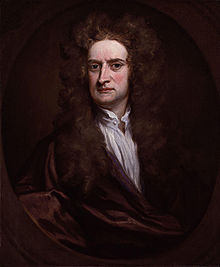
Warden of the Mint was a high-ranking position at the Royal Mint in England from 1216 to 1829. The warden was responsible for a variety of minting procedures and acted as the immediate representative of the current monarch inside the mint. The role of warden changed greatly through history with the original task being the receiving, assay and payment for bullion,[1] while later evolving into more of an administerial role.
The office received a yearly emolument of £500. Up until 1685, wardens were given tenure: many of them died while in office.[2] Although technically subordinate to the Master of the Mint whose job was act as a contractor to the crown, many wardens advanced later on to become Master of the Mint with some wardens holding both offices at the same time.
The most illustrious holder of the office of Warden of the Mint was Isaac Newton, who was warranted to this position on the recommendation of his friend, Charles Montagu, Chancellor of the Exchequer in 1698. In 1699 however, Newton undertook the office of Master of the Mint, which was far more lucrative, as well as potentially more technically challenging. After the death in 1829 of the final warden, Sir Walter James, 1st Baronet, the office was abolished having existed for 613 years.
- ^ Craig 1953.
- ^ Cite error: The named reference
IHRwas invoked but never defined (see the help page).
© MMXXIII Rich X Search. We shall prevail. All rights reserved. Rich X Search
